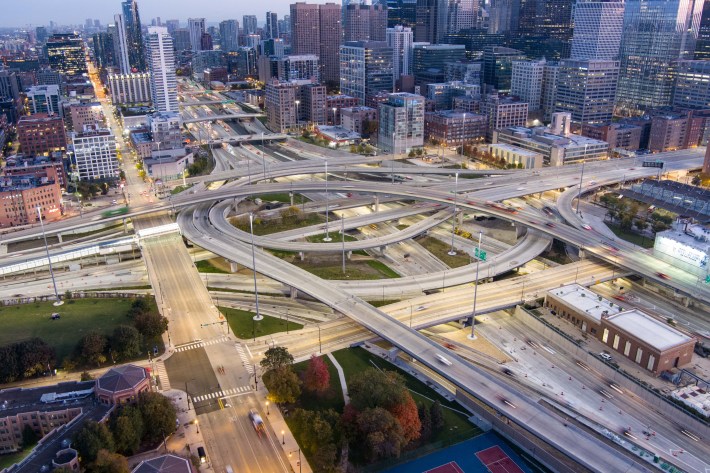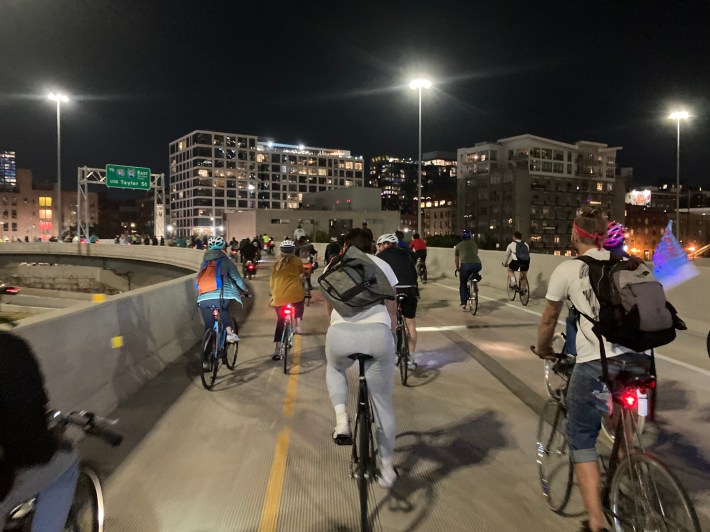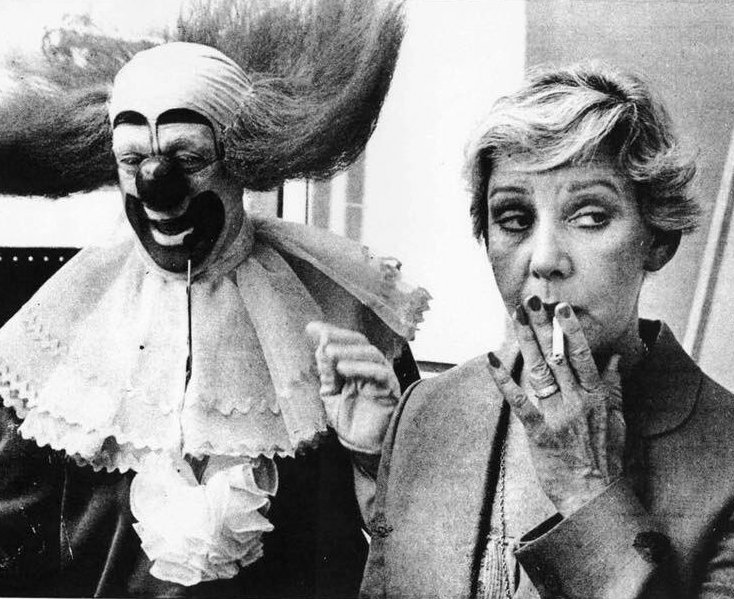Has there ever been a worse expenditure of the better part of a billion dollars in Chicago than the Jane Byrne Interchange expansion project?
On December 14, Governor J.B. Pritzker cut the ribbon on the massive expressway "spaghetti bowl" enlargement in the West Loop. The initiative has cost $806.4 million so far, 51 percent higher than the $535 million estimated when construction began in 2013. That's 12.6 times as expensive as the $64 million Navy Pier Flyover bike-pedestrian bridge, Illinois' priciest cycling project. The work has also taken five years longer than originally projected.
The Illinois Department of Transportation is trying sell this giant expenditure for drivers as something that will result in more efficient, safer, and even greener transportation. "The finished product is predicted to result in a 50 percent reduction in vehicle delays, saving motorists an annual 5 million hours previously spent sitting in traffic and $185 million in productivity," IDOT said in a news release. "Vehicle emissions are anticipated to reduce by a third, with annual gas consumption decreasing by 1.6 million gallons a year. Crashes are predicted to go down 25 percent."

Those rose-colored projections are highly dubious. Analysis by Chicago Metropolitan Agency for Planning prior to the project's approval in by CMAP in 2013 (which ignored the agency's own findings) noted that none of those kinds of improvements were guaranteed and warned that the project would lead to more car trips, more carbon emissions, and fewer transit trips. The interchange expansion was projected to convert 1,000 trips from transit to driving and increase carbon dioxide emissions by 39,000 metric tons each year. Moreover, CMAP predicted that drivers in the region would save a mere 1.2 seconds per trip if the project was built.
At the time, then-Active Transportation Alliance Executive Director Ron Burke noted that the interchange project was a poor way to achieve transportation goals. “If you really want to address congestion in a long-term sustainable way, we need to give people alternatives to driving, especially driving alone,” he said. "We’re concerned about this emphasis on highway expansion at a time when the experience in Chicagoland and other areas shows us that it is, at best, a short-term solution to roadway congestion. In general it perpetuates land use and travel patterns that make us auto dependent creating a negative feedback loop."

And then there's the cautionary tale of the $105 million project to “fix” the west-suburban Hillside Strangler bottleneck in the early 2000s. That was a textbook example of how throwing money at road expansion projects does little or nothing to prevent traffic jams. When you make more room for cars on highways, more people choose to drive – a phenomenon known as induced demand – and thus the effect on congestion is negligible. As with the Strangler "improvements," any congestion reduction from the opening of the Jane Byrne will likely be limited to a few weeks or months.
Nonetheless, today the Twitter account for the Jane Byrne Express, presumably run by IDOT, celebrated its official opening with this cheeky tweet.
This is a monument to asthma, climate change and blunt force trauma.
— Bella Chu (@bellachu10) December 21, 2022
— Microsoft Outlook Hate Account (@Disco_Meatball) December 21, 2022
Not entirely surprising from a city that thinks this is a good use of a downtown lakefront... pic.twitter.com/4szlLTnv3h
— Finlay Knops-Mckim 🚲 (@FinKnopsMckim) December 21, 2022
Pretending that a new freeway interchange is bringing America’s other great transit city ‘into the 21st century’ is ludicrous. Maybe they should have used #IDIOT instead of #IDOT. https://t.co/Q5o0xzkkog
— The Red Line Podcast (@TheRedLine_pod) December 21, 2022
There's a lot more insightful commentary, as well as comedy gold, to explore in the thread. Maybe IDOT will think twice next time before telling Chicagoans to "move over" to make way for cars.



